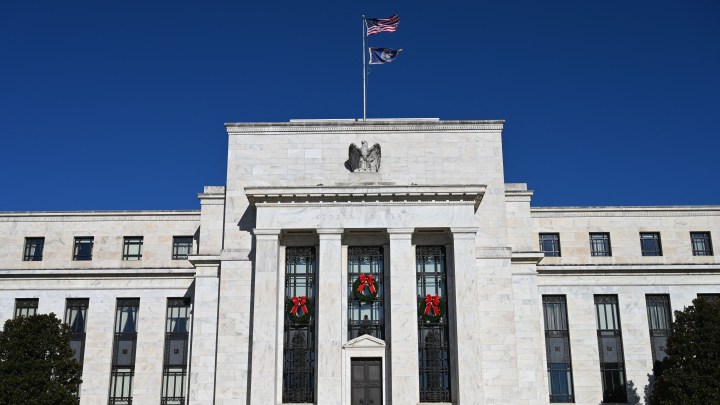
The Fed has ways to put the brakes on rising prices

News Tuesday from the Marketplace Department of No Duh: Inflation. It’s happening.
This time, it’s producer prices we’re talking about — that’s how much businesses pay for inventory, raw materials and so on. In November, they were up 9.6% from a year earlier, according to the Bureau of Labor Statistics. That’s the highest rate since 2010, when the BLS started keeping track.
Excluding food, energy and trade services, the core producer price index was up 6.9%, yet another record.
It was against this backdrop of inflation news that the Federal Reserve’s Open Market Committee met Tuesday to decide what to do with this economy.
So what can the Fed do? Is tapering bond purchases gonna unclog supply chains? Will raising interest rates mean that chair you ordered six months ago will actually arrive?
Turns out the Fed can do a lot to reduce inflation. “They can stop buying long-term bonds, which they’ve been doing, and they can stop it quicker,” said Joe Gagnon, a senior fellow at the Peterson Institute for International Economics. “And then they could also raise interest rates.”
Doing both would mean there’s less money floating around that people can borrow for cheap to buy houses or cars. If people are buying less, prices will start to come down … eventually.
“Even if the Fed begins acting today, it may be a number of months before we see the impact,” said Carl Tannenbaum, the chief economist at Northern Trust.
He said that for all the power the Fed has — and it’s a lot — it doesn’t have any power over COVID.
“COVID-19 is an understated contributor to various types of inflation that we’re experiencing today,” Tannenbaum said.
As long as the virus is raging, he said, factories will continue to close, ports around the world will be jammed and there will be more demand than supply. “A continued worldwide effort to combat the pandemic may be the best thing for getting inflation back under control.”
While the Fed can’t solve those supply chain issues or get more people vaccinated, it can manage people’s expectations about inflation, according to Ann Owen, an economics professor at Hamilton College, by saying things like, “Hey, we’re going to do something about this.”
“And that’s actually an important part of managing inflation,” Owen said. “If we can keep inflation expectations low, it will mean that inflation will be lower.”
Because, she said, what people think inflation will be in the future influences their behavior in the present.
“Employers may be feeling some pressure to increase wages, or perhaps if you’re a company and you sell consumer goods and you’re setting your prices, maybe you’ll set those prices higher,” she said.
If the Fed can convince people that inflation’s under control, Owen said, maybe soon it will be.
There’s a lot happening in the world. Through it all, Marketplace is here for you.
You rely on Marketplace to break down the world’s events and tell you how it affects you in a fact-based, approachable way. We rely on your financial support to keep making that possible.
Your donation today powers the independent journalism that you rely on. For just $5/month, you can help sustain Marketplace so we can keep reporting on the things that matter to you.

















